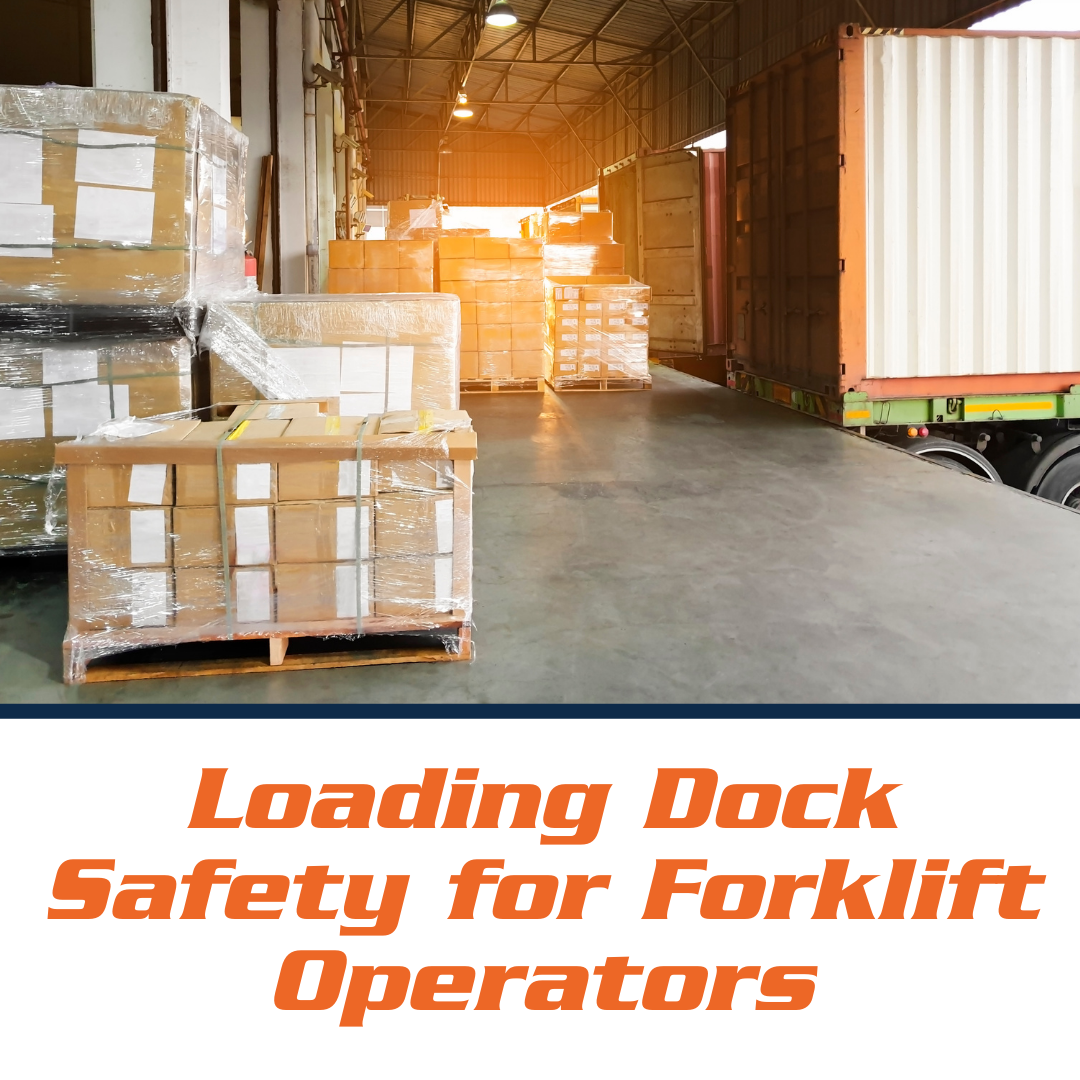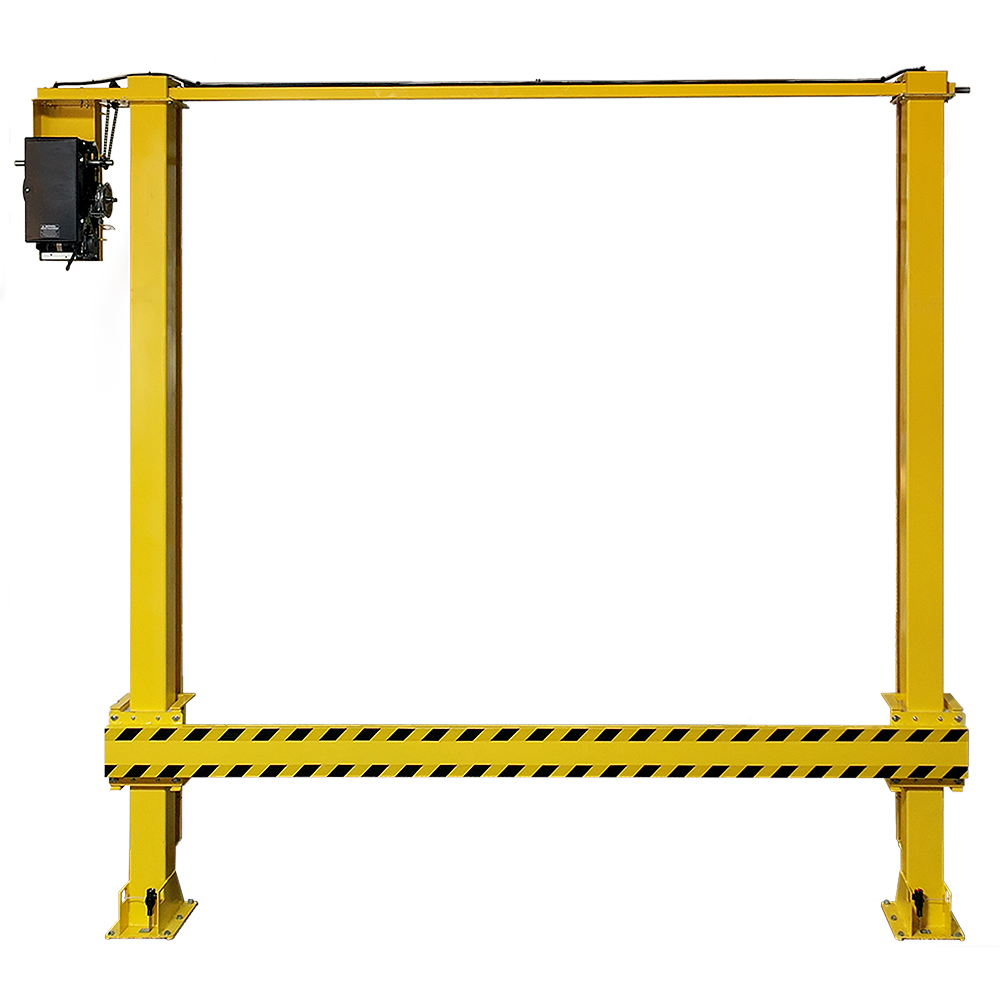We use cookies to make your experience better. To comply with the new e-Privacy directive, we need to ask for your consent to set the cookies. Learn more.
Loading Dock Safety for Forklift Operators
When you mix forklift traffic with unguarded, elevated surfaces, you face a serious risk of injury or worse. You can’t operate a busy loading dock without forklifts, but you can design docks to reduce the risk for forklift operators — and the industry could always improve its safety record.

In 2020, more than 6,700 workers in transportation and warehousing missed work due to injuries caused by a particular hazard: falling off an elevated platform. That figure easily places warehousing and transportation in the top 10 industries for this type of injury. Some of those accidents might have involved falling from a mezzanine or trailer — but many of them, it seems likely, took place at the loading dock.
Forklift accidents at the dock don’t just cause injuries severe enough to require sick days. They can also be fatal. According to the National Institute of Occupational Safety and Health (NIOSH), most fatalities associated with forklifts “occur when a worker is crushed by a forklift that has overturned or fallen from a loading dock.”
The good news is that there are concrete steps employers can take to improve loading dock safety, both for forklift operators and those who work around them. Here’s an overview of the risks of operating forklifts at loading docks, plus a few things every employer should do to prevent forklift accidents at the dock.
Evaluating the Hazards of Forklifts on Loading Docks
The authorities on workplace safety — the Occupational Safety and Health Administration (OSHA), NIOSH, and industry publications like Safety and Health Magazine — list a number of serious risks to forklift operators at loading docks. These include:
- Rolling over the dock edge. Most U.S. docks stand 48 to 55 inches above ground level. That’s more than enough height to cause serious injury or death to forklift operators or surrounding workers if a truck falls. Roll-overs sometimes occur as drivers back up, and when bay doors and dock edges aren’t guarded and/or highly visible.
- Slipping on wet or icy docks. Inclement weather increases the risk of losing control of a forklift, which can then slide into workers or off the dock. Spills can also cause trucks to slide, especially those involving oil or other lubricants.
- Truck drive-away. Truck drivers may unwittingly pull away from the dock just as a forklift enters the trailer with a load. That’s an all-too-common cause of serious dock accidents.
- Trailer creep. As loaded forklifts enter and exit, a trailer’s suspension can shift with the weight — and sometimes sink to a level that causes lift trucks to overturn. Similarly, trailers without appropriate controls (more on that later) may shift away from the dock, introducing dangerous gaps.
- Shifting or failing dock boards. Dock boards are designed to create a safe bridge between dock edges and trailer entrances. But they have to be properly secured, well-maintained, and rated for the weight of a fully loaded forklift. Failure to take these precautions can cause the board to fail or shift, leading to serious accidents.
All these hazards increase the likelihood of forklift accidents. So how do you reduce the risk? Here are a few simple ideas for improving loading dock safety without overhauling the entire infrastructure.
5 Tips to Improve Loading Dock Safety for Forklift Operators
Once you identify the hazards, take action to control them. OSHA’s Hierarchy of Controls prioritizes various means of reducing risk. The most effective, according to the Hierarchy, is to physically remove the hazard. Of course, you can’t just get rid of the dock. The second most-effective hazard control is to replace the hazard with a different mechanism for getting the same task done. That’s also not feasible for loading docks.
The tips we list below belong to the third rung on the Hierarchy: engineering controls. These are systems or infrastructure changes that keep workers from getting too near a hazardous condition. While risks remain, engineering controls isolate them from workers, preventing them from leading to injury. Here are a few of these controls that can create a safer loading dock for forklift operators and the employees who work around them.
1. Mark dock edges with high-visibility paint.
It’s hard to avoid drop-off you can’t see. The first step toward reducing the risk of forklift roll-off at the dock is simply to make it hard to miss the edge. According to OSHA standard 1910.144(a)(3), “Yellow shall be the basic color for designating caution and for marking physical hazards…” To be specific, safety experts recommend a shade called “safety yellow,” or sometimes “OSHA safety yellow.” Apply a coat to all dock edges and door thresholds.
2. Keep dock surfaces clean, dry, and free of obstacles.
A wet dock is an unsafe dock. Prevent slipping with flooring designed to improve traction. Moisture isn’t the only risk factor for forklift operators, though. Obstacles may force lift trucks dangerously close to the dock edge, so it’s important to maintain a tidy loading dock.
It’s also mandatory. OSHA standard 1910.22(a)(3) requires all “walking-working surfaces” — which includes loading docks — to be “maintained free of hazards such as sharp or protruding objects, loose boards, corrosion, leaks, spills, snow, and ice.”
Request information on Slip-Resistant Epoxy Flooring from BHS, Inc.
3. Install guardrails between dock doors.
Safety barriers are a great example of a workplace safety engineering control. They physically isolate risky areas or equipment, and they’re hard to miss. While you can’t permanently block off a dock door, it’s a good idea to install guardrails between trailer access points, or wherever feasible.
In fact, OSHA standard 1910.28 requires either guardrails, safety nets, or fall-protection systems around all working surfaces that rise 4 feet or higher from a lower level. Most docks meet this criteria.
Explore Safety Barriers & Guardrails from BHS, Inc.
4. Inspect dock boards, levelers, and trailer floors before opening them to lift truck traffic.
Dock boards are rated for different weight capacities. It’s essential to know both the weight of your loaded forklift and the safe load limit of dock boards before using them. But weight capacity isn’t the only factor that affects dock board safety. Corrosion, dents, or cracks can lead to dock board failure — so keeping these tools properly maintained is also important. Verify that all dock boards and levelers are in proper condition prior to every use.
According to OSHA standard 1910.26, dock boards must be “capable of supporting the maximum intended load.” They must also be “secured by anchoring them in place or using equipment or devices that prevent the dock board from moving out of a safe position.”
5. Block unused dock doors with Powered Dock Gates.

Dock doors lead directly to dock edges, creating a hazard for forklift operators. Even if you keep them closed, most dock doors can’t withstand the impact of a reversing forklift. Powered Dock Gates provide the solution.
These powered barriers lower to safely block dock openings, and raise with the press of a button when it’s time to load a trailer. They withstand impact forces of up to 10,000 pounds at 4 miles per hour, so even if a forklift operator miscalculates, they’ll prevent accidents. Powered Dock Gates are finished with high-visibility powder coating, so they’re easy to spot, providing another layer of defense. These protections can help employers comply with the fall-protection requirements of OSHA standard 1910.28, as well as the American National Standards Institute (ANSI) standard A1264.1-2017, which covers safety for work surfaces as well as wall openings.
Learn more about BHS Powered Dock Gates .
In addition to the tips listed above, employers should provide dependable means to protect against trailer creep and premature truck departure. OSHA standard 1910.26(d) requires “measures, such as wheel chocks or sand shoes” to keep trailers steady at the dock — but chocks alone may not be sufficient. You may also require drivers to exit vehicles during loading and unloading, and/or use automatic vehicle restraints or other systems that protect against trailer movement.
These investments in loading dock safety provide an instant return on investment with the first prevented injury, and they don’t require costly or time-consuming construction. Learn more about guardrails, Automated Dock Gates, and other dock-safety solutions from BHS by calling 1.800.BHS.9500.
